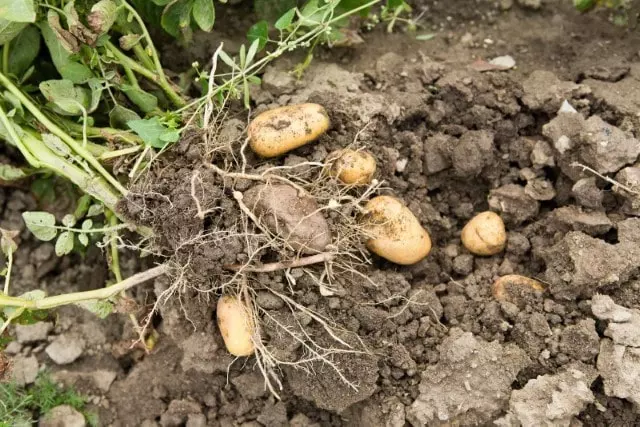How do you know when potatoes are ready to harvest? Though planting potatoes is easy, knowing when to harvest potatoes is not that straightforward. Potato plants change appearance when they are “ripe”. So, as harvest time approaches, potato plants change in appearance. This change is easy to appreciate. What do potato plants look like when they are ready for harvest? In this article, we give you tips to know when potatoes are ready to harvest.
Once you know when potatoes are ready to be harvested, you will need to know when and how to harvest to take the necessary precautions and properly preserve the potato crop. Also, how to store potatoes after harvesting. In this article, we include different methods to preserve harvested potatoes and all you need to know about harvesting potatoes.
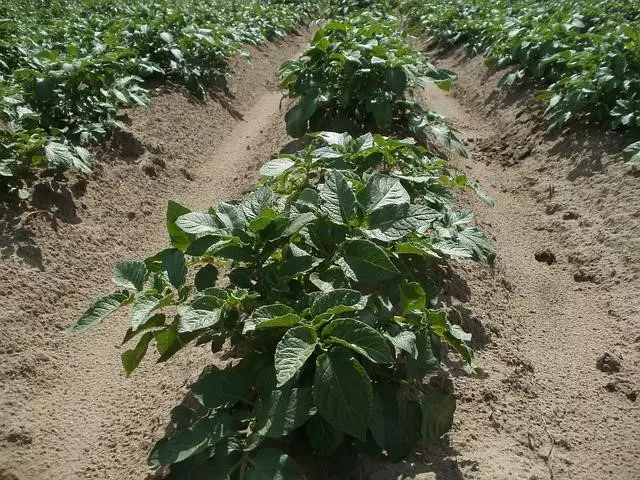
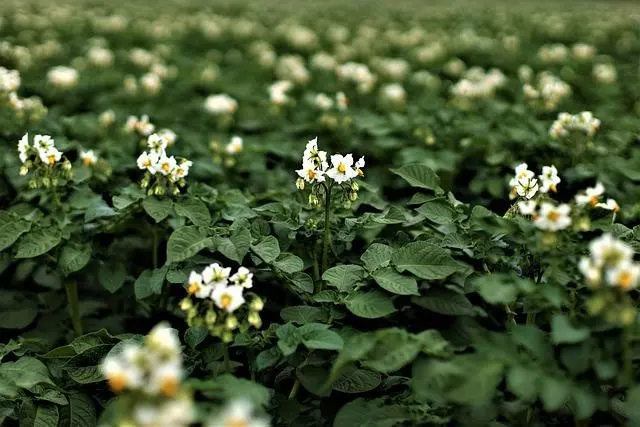
This article tells you how expert gardeners know when the potato crop is ready for harvest.
In the photos above, just by looking at the potato plants with white flowers and abundant green foliage, we know that these potatoes, although grown for 120 days, are not yet ready to be harvested, and this crop will still need many more weeks.
Table of Contents
How Do You Know When Potatoes Are Ready To Harvest
Realizing that the time for harvesting potatoes is approaching does not happen overnight. It is gradual. Many beginning gardeners just count the harvest days since they planted the potatoes, which is a way to calculate when to harvest potatoes. However, it is not the best way to determine when to harvest potatoes.
It is important not to harvest potatoes too early nor to leave them in the ground much longer than is strictly necessary. Potatoes should not be harvested either before they are ripe or much later.
The potato plant has different characteristics in the leaves, and the stems, that indicate when potatoes are ready to be harvested. Below we explain the changes in the plant that will give you the best and most reliable indicator to understand when to harvest potatoes.
Before the potato harvest, you will see that the white flowers of the potato plant begin to dry, although the potato plant is still green and has abundant foliage. This indicates that it is not yet time to harvest the potatoes and that they are not ready.
Why not harvest potatoes early? If harvested too early, the thin skin will peel off during handling and spoil in a few days. This is why we say that it is not advisable to harvest potatoes early.
We can see in the plant that will indicate when potatoes are ready to harvest. So, How do you know when potatoes are ready to harvest? Let’s see what to look for in the potato plant.
When Are Potatoes Ready to Harvest
When Are Potatoes Ready to Harvest? When it is time to harvest potatoes, potatoes turn yellowish, with dry leaves and a decayed appearance, as if they were dying. This change is gradual, it does not happen overnight, so it is normal to see some plants start to yellow, but the others will remain green. At this point, all the white flowers on the potato plant are dried out and died a few weeks ago.
When Are Potatoes Ready to Harvest? You will see that the potato plant loses its leafiness, and the soil around it begins to be much more visible than in previous months as the plant is losing volume. The potato plant leaves turn yellowish and look like dry leaves, then it is time to harvest the potatoes.
These potatoes are ready to be harvested, although it is advisable to wait a few more days for the maturation process of the potato skin that we explain below.
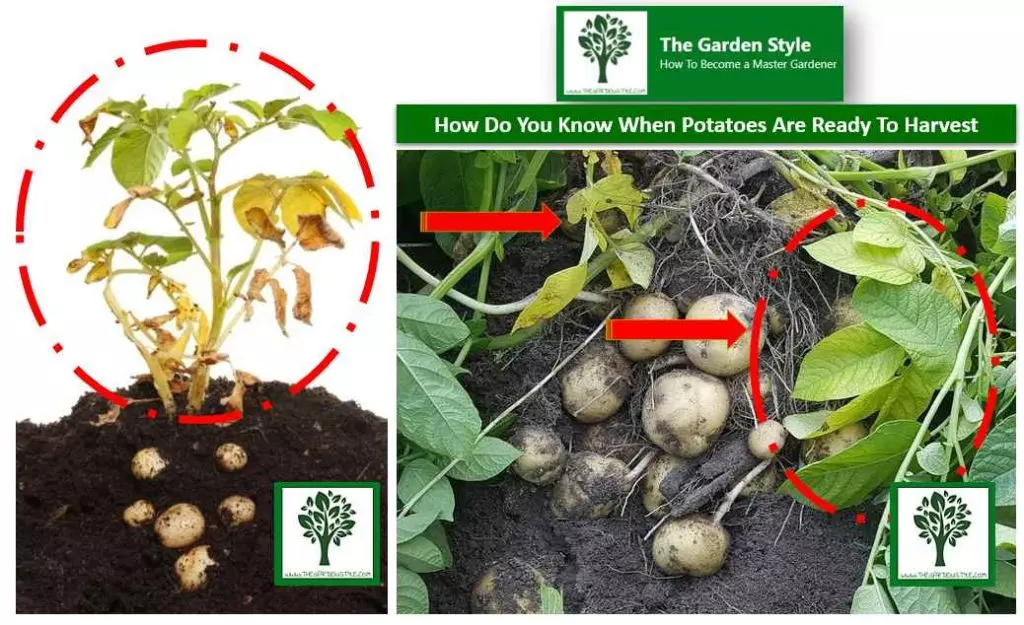
If left in the ground for some time after ripening, pests will feed on them, especially during the rainy season. Pathogenic fungi, worms, or mice can invade potato crops if they are not removed at harvest time.
So, now we know when potatoes are ready. Let’s see When to Harvest Potatoes, when is the best time.
It is advisable to allow only a few days from when the potato plants turn yellow until the potatoes are harvested. This time allows the potato skins to harden and become much tougher. Removing dry, yellowing potato plants from the field a few days before harvesting them is advisable. This will speed up the hardening process of the potato skins, and, in addition, harvesting with a tractor will be much easier.
When to Harvest Potatoes
When to Harvest Potatoes. It is advisable not to harvest potatoes on rainy days or if it has previously rained. It is also recommended not to irrigate on days before harvesting the potatoes.
When to Harvest Potatoes. Harvest on dry days, avoiding rainy days when the soil is as dry as possible.
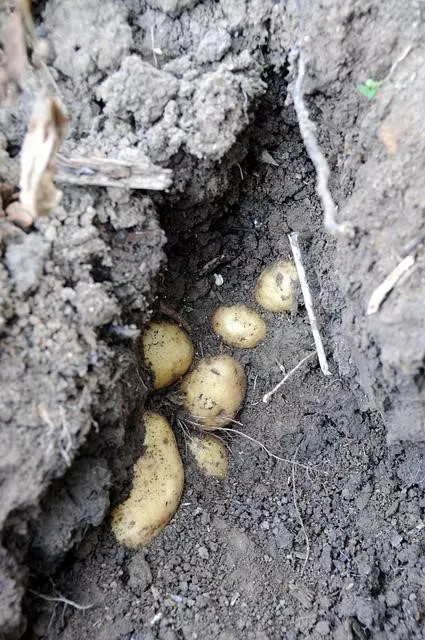
If they are not stored for a long time, they can be harvested even if the skin has not hardened. They will be much juicier but should be consumed quickly.
In addition to understanding when potatoes are ready to harvest by observing the plant, we can also count the time of potato cultivation.
Yellow potatoes are ready to harvest in about 120 days (four months on average), while other potato varieties take between nine and 10 months to harvest.
Harvesting when it begins to yellow and dry the aerial part is recommended. As the plant grows, it is necessary to pull the weeds. Forming a small mound of soil around the potato plant is convenient to prevent the tubers from greening.
It is recommended to check and make this small mound of soil in 2 moments during potato cultivation. A first soil mound approximately 20 days after planting and another one a month and a half after planting. It is crucial to water abundantly to achieve satisfactory growth.
How to Harvest Potatoes
How to Harvest Potatoes. It is recommended to use the trident, fork, and hands during potato harvesting, in case it is not a large-scale potato planting field.
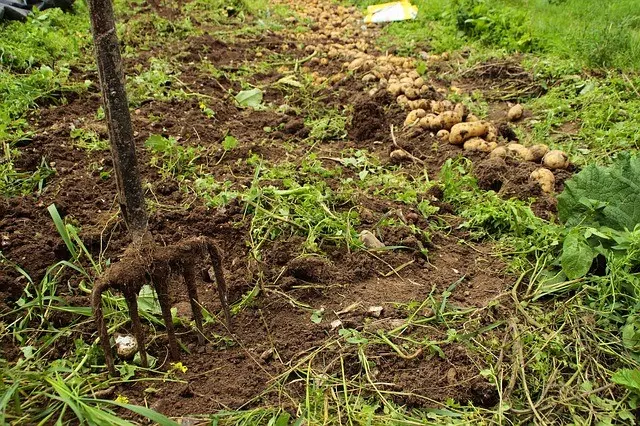
Care should be taken not to hit the tubers excessively, and an excellent selection of size and quality should be made.
Mix good potatoes and cull potatoes, do not include diseased, cut, or holed potatoes in the harvest containers.
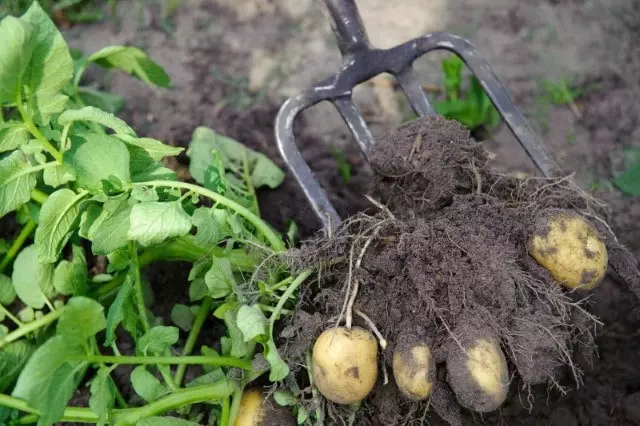
Green potatoes should be avoided as they are also toxic for consumption. And if tubers that tend to turn green are stored in bags, it is advisable to use white bags. Transparent bags should only be used with potato varieties that do not turn green.
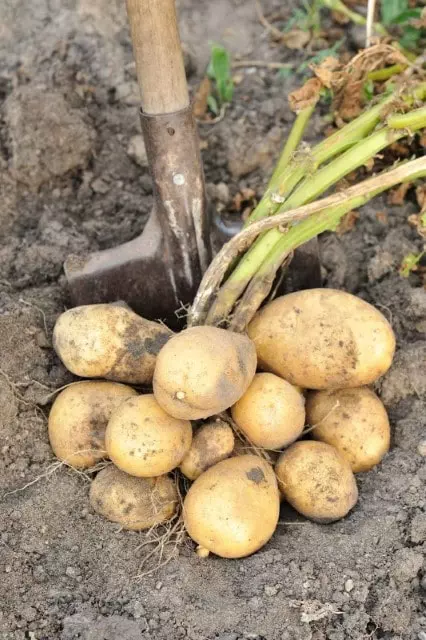
What To Do With Harvested Potatoes
What To Do With Harvested Potatoes. Once the potatoes are harvested, we will preserve potatoes for winter.
Why Is It So Important To Preserve Potatoes? There are several reasons to grow, harvest, and preserve potatoes correctly.
- Potatoes spoil quickly if we don’t harvest potatoes at the right time.
- If we do not preserve the harvested potatoes for a long time and in the right way, the potatoes will spoil very quickly. In less than three months, they will have roots and no longer be edible because they are toxic.
- Staggered potato cultivation throughout the year is not possible. It is only possible in regions with year-round warmth and mild winters.
- Potatoes require proper storage during the winter to avoid spoilage.
This is why storing freshly harvested potatoes for the long term is so important. Below we will look at different ways to keep harvested potatoes. Let’s continue reading How To Store Freshly Harvested Potatoes, How To Preserve Potatoes After Harvesting, and How To Preserve Potatoes Long Term.
How To Store Potatoes After Harvesting
How To Store Potatoes After Harvesting. Potato tubers – the edible part of the potato plant, the potato – can be eaten as soon as they are dug out of the ground or stored for later.
Can potatoes be grown and harvested all year round? How do you grow potatoes in a staggered way? You are probably wondering why they are not planted in a staggered manner, like other crops, to have potatoes fresh from the ground all year round instead of having to store them for so long. This would be ideal, but it is only possible in climates that are always warm or have mild winters.
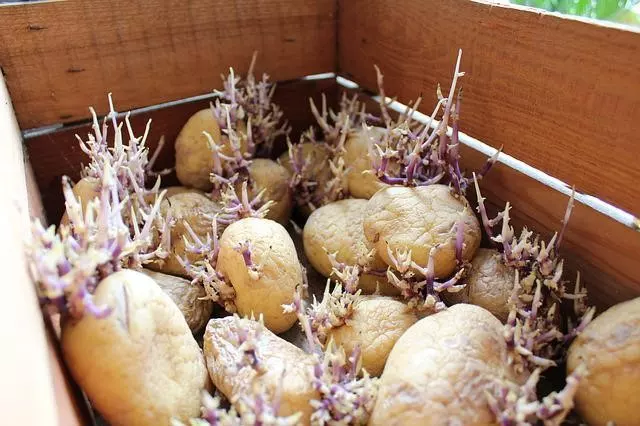
This limitation of potato cultivation to only a few months of the year makes it necessary to store them until the next harvest.
The leading cause of poor potato preservation is early harvesting. Immature tubers have fragile skin that peels off at the slightest touch, which causes them to spoil very quickly.
Potatoes should be harvested when the potato plants are yellow, with a dry aspect, and after checking that the skin has already hardened.
To preserve harvested potatoes naturally, storing them in a cool place (less than 59°F (15℃) and with very little light is advisable.
Boxes with holes for ventilation, directly on the ground on straw-raised boards, or something that allows air to circulate underneath can be used as potato containers. In this way, we will keep the potatoes aerated and avoid fungal growth and unwanted root development.
How To Store Potatoes After Harvesting for Long Term
Potatoes Long-Term Preservation. In a house, the best place to store them is in the garage, the basement, or the cellar, the lowest and freshest space available. From there, they are taken in small quantities to the kitchen to be consumed.
What To Do With Harvested Potatoes. If the place is suitable for conservation and the potatoes are healthy, they can be conserved for about 8 months. Although they will have shriveled up at the end of that period, they are still usable.
How To Store Potatoes After Harvesting. It is imperative not to wash the potatoes before storing them and not to harvest them if it rains. They should come out of the slightly damp ground and finish air-drying before storing.
This is why we mentioned that it is key to minimize the moisture the potato receives so that it does not rot or develop roots. Potatoes with seeds should not be consumed because they contain naturally toxic substances such as solanine, which is very toxic to humans and animals.
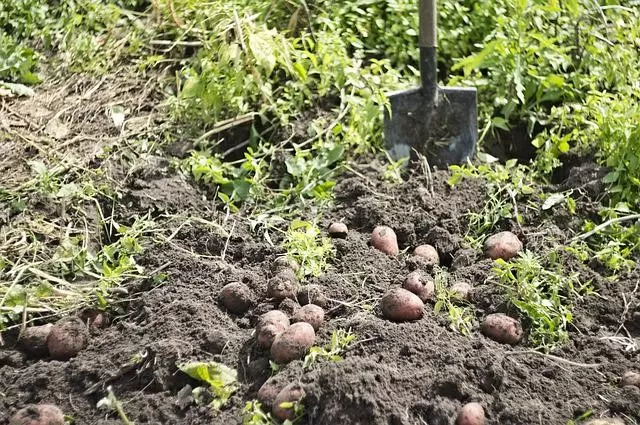
How To Store Freshly Harvested Potatoes – Preserving Potatoes in Soil
How To Store Freshly Harvested Potatoes – Preserving Potatoes in Soil. Another option is to keep potatoes in the ground, which keeps them fresh. However, it is critical to minimize moisture damage and keep pests away for potatoes to be stored in the ground after harvest. To store potatoes in the ground we recommend:
- Place a wire netting over the soil to keep out mice.
- Place a layer of straw or bark, or sawdust on the wire mesh.
- Place the potatoes on this layer of fibrous and stable material. Cover them with another layer of the same material.
- Finally, pour soil over the potatoes to cover them with about 4″ (10 cm), and if possible, put a roof to prevent rain on them.
Supermarket Potatoes – Chemical Treatment – How To Preserve Potatoes Long Term
You should know that the potatoes you buy in supermarkets have almost always been treated with one or more chemical products that prevent them from sprouting, so they remain eatable for a long time.
In general, red potatoes are subjected to this chemical process to prevent sprouting because they are more expensive potatoes. You have probably been unsuccessful if you bought red potatoes in the supermarket and tried to get them to sprout roots in water.
Generally, any variety of untreated potatoes begins to sprout after the third month of storage. However, chemical treatment of harvested potatoes inhibits quite well the ability of potatoes to form sprouts and roots or at least minimizes the formation.
The advantage of this chemical treatment is that harvested potatoes remain edible for much longer and facilitate their transport and marketing by not making storage conditions more expensive.
